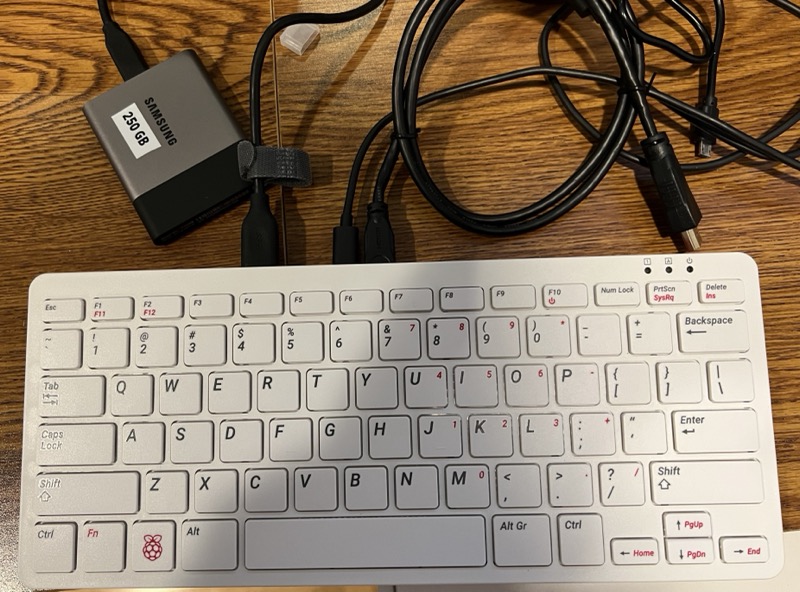The day started with Torah Study and Shir Shabbat, as usual.
After lunch, we drove over to Central Computers and picked up my new Raspberry Pi 400 – I resisted playing with it until after dinner.

I decided to take the path of least resistance this time around and used the new Raspberry Pi imager program to create the SD card that the Pi boots from; I even let it install the graphical desktop so that I could take advantage of the HomeBridge configuration tools instead of editing JSON files by hand.
And then I attached the Pi to the monitor in the office, powered it up, and…nothing. The green “On” light was lit, and I could even see that it had gotten onto the network briefly, but I couldn’t connect to it, and the monitor said that there was no signal no matter what I did. After about an hour, I took a close look at the way I’d connected the Pi to the monitor and realized that I’d actually connected it to the HDMI output of the Mac Mini in the office. I connected it to the monitor and hey presto – I could see the Raspberry Pi desktop on the monitor!
The rest of the setup was easy; they’ve even made it trivial to move the system from the SD card to a USB-attached SSD drive.
I installed HomeBridge and it worked; I got as far as installing a plugin for the Sonos speaker in the living room and that worked, too – I can turn the speaker on and off, set the volume, and choose various Internet radio stations.
Tomorrow, I’ll install the rest of the plugins I need to interact with the devices in the house and see if I can get the automations set up. I’ve set up remote access to the Pi so that I don’t have to have it physically connected to a screen, so I can put it somewhere out of the way.